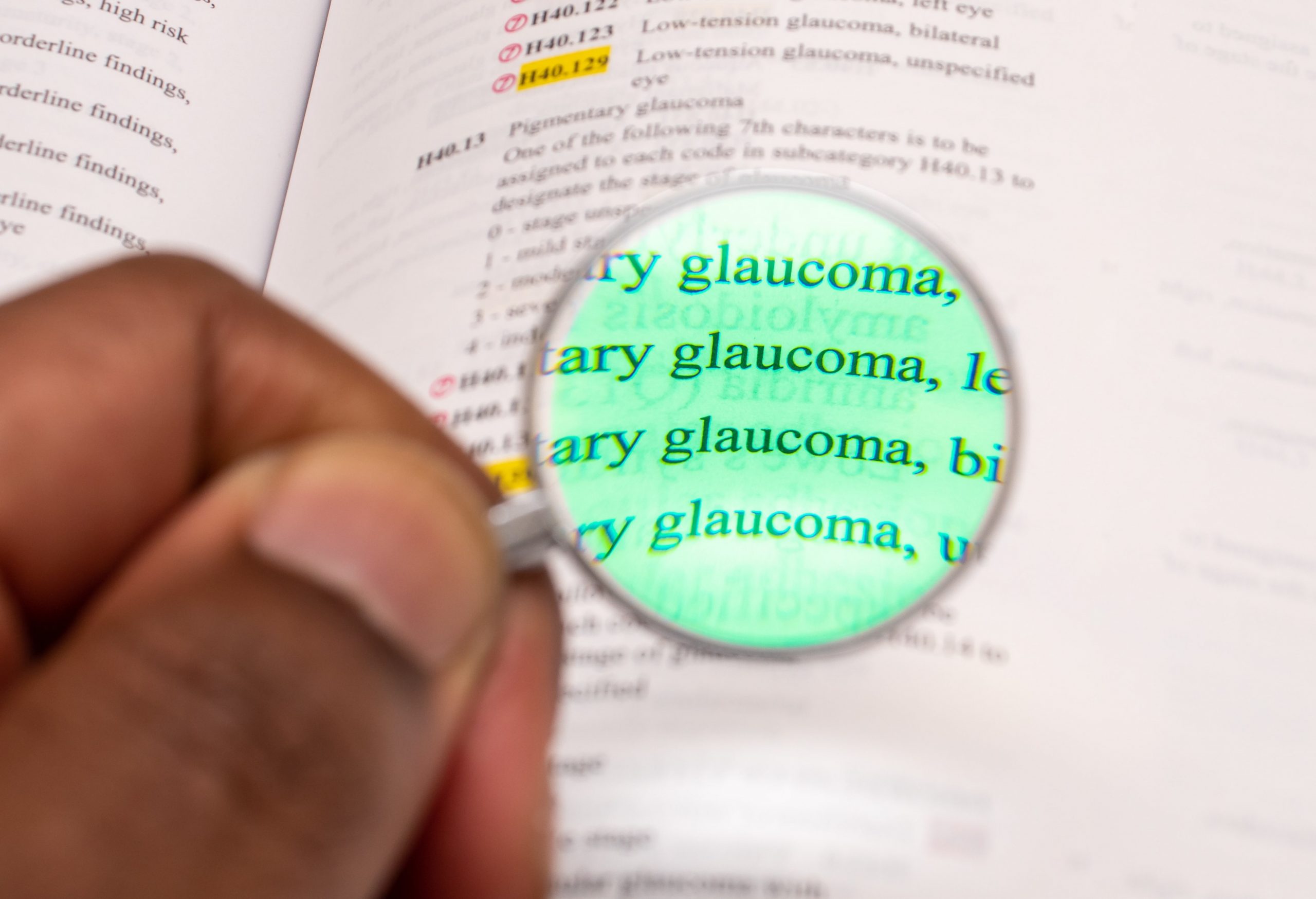The loss of vision in the elderly is a major health issue. By the age of 65, one out of every three people has some sort of vision-impairing eye condition. The most common causes of vision loss in the elderly include AMD, cataracts, glaucoma, and diabetic retinopathy. A sign of AMD is the loss of central vision. Optic nerve injury and visual field loss are symptoms of primary open-angle glaucoma. Regular screening checks are indicated for senior people because this illness may be asymptomatic at first. Although cataracts are a significant cause of visual loss in the elderly, surgery can often restore vision. Diabetic retinopathy can be seen in the elderly at the time of diagnosis or in the first few years after being diagnosed with diabetes. When diabetes is diagnosed, patients should have their eyes examined with dilation and then every year after that.
In the United States, the aging population is quickly growing. Approximately 70 million Americans will be over the age of 65 by 2030. Vision loss in the elderly is a major health issue: by the age of 65, one out of every three senior people has some sort of vision-reducing eye condition. Vision impairment is linked to a diminished capacity to carry out everyday tasks and a higher risk of depression.
What are some of the most prevalent eye disorders associated with growing older?
These are a few eye conditions that become more common as individuals become older, but they can affect anyone at any age. No matter how old (or young) you are, you may lessen discomfort and improve eyesight by doing a few easy things.
Presbyopia
Presbyopia is the loss of the capacity to perceive small text or near things up close. Presbyopia is a natural phenomenon that occurs over the course of a lifetime. Most people don’t notice these changes until usually their mid 40’s. While reading or doing other close tasks, some persons have headaches or “weary eyes.” If you have presbyopia, you can improve your vision using reading glasses or multifocal (bifocal) lenses.
Flashes and Floaters
Floaters are small dots or particles that float across your view. The majority of individuals notice them in brightly light rooms or outside on a sunny day. Floaters are usually harmless, but if they are accompanied by light flashes, they could be a sign of an eye condition like retinal detachment. If you detect a sudden change in the type or amount of spots or flashes, make an appointment with your eye doctor very once.
Eyes that are dry (also called keratoconjunctivitis sicca)
Tear glands are unable to generate enough tears or produce tears of poor quality, resulting in dry eyes. Itching, burning, and even vision loss can occur as a result of dry eyes. A humidifier or special eye drops that mimic real tears may be recommended by your health care practitioner. In more severe cases of dry eyes, surgery may be required.
Dripping (watery eyes, also called epiphora)
Being sensitive to light, wind, or temperature fluctuations can cause tears or an excess of tears. In certain instances, covering your eyes or using sunglasses may assist to address the issue. Tearing could indicate a more serious issue, such as an infection in the eye or a blocked tear duct. Furthermore, because dry eyes are readily irritated, people with dry eyes may cry excessively. Dry eye symptoms can be treated by your optometrist.
Problems with the eyelids
Eyelid problems can be caused by a variety of diseases or situations. The eyelids are responsible for protecting the eye, distributing tears, and limiting the quantity of light that enters the eye. Eyelid disorders are characterized by pain, itching, tears, and light sensitivity. Drooping eyelids (ptosis), blinking spasms (blepharospasm), or irritated eyelids around the eyelashes are some of the other issues that can occur (blepharitis). Medication or surgery are frequently used to treat eyelid issues.
Macular Degeneration as a Result of Growing Older (AMD)
The macula, a small region of the retina at the center of the retina that is responsible for sharp central vision, is primarily affected by age-related macular degeneration.
If you have AMD, you’ll have trouble doing things like reading, writing, driving, and distinguishing between different hues of color. Early signs of AMD include distorted, blurry, or gloomy central vision.
Four characteristics stood out in a major clinical investigation conducted by the National Eye Institute (NEI) called The Age-Related Eye Disease Study (AREDS) in raising AMD risk:
- Family history
- Age
- Race (Caucasian)
- Use of tobacco (Smoking)
AMD can either be in the form of Wet being the worst or the less invasive form being dry. Each type necessitates a unique treatment strategy.
A complete retinal exam can detect early signs of AMD and help to slow down its progression.
Cataracts
The lenses of a healthy eye are primarily clear and flexible. The lenses become less flexible as you become older, and foggy spots usually fill the entire lens inside your eye. When you have cataracts, this is what happens.
According to the American Academy of Ophthalmology, half of all Americans will have cataracts by the age of 75. Cloudy or blurred vision, poor night vision, and seeing colors that aren’t as vibrant as they once were are all early indicators of cataracts.
Cataracts can only be removed through lens replacement surgery. It entails making a small incision and removing the original lens before replacing it with a new, artificial lens. With over 1 million treatments performed each year, cataract surgery is the most common surgical procedure covered by Medicare. When a cataract impairs vision to the point where it interferes with daily activities, this operation should be considered. In most cases, the presence of lens opacities—that is, opacities that aren’t accompanied with impaired vision—isn’t enough to warrant surgery. Cataract surgery is a technique that is done in the office under local or topical anesthetic. Phacoemulsification procedures are used in the majority of cataract surgeries today. Ultrasonic fragmentation of the lens into fine bits, which are then aspirated from the eye, is referred to as phacoemulsification.
Phacoemulsification’s small incision size allows for faster eyesight restoration than traditional cataract surgery. A lens implant is normally placed within the lens capsule, but if there is insufficient capsular support, it may be inserted in front of the capsule or on the iris. Within three to five years, opacification of the posterior capsule may develop in up to 50% of eyes having intraocular lens implants. Nd: YAG laser capsulotomy is a safe and successful surgery for clearing the visual axis and restoring vision in these instances.
If there is no ocular comorbidity, almost 90% of people who have cataract surgery report improved vision and quality of life. Cataract surgical complications are uncommon, occurring in less than 1% of cases. Glaucoma, hemorrhage, infection, vitreous loss, retinal detachment, and vision loss are all possible consequences.
Diabetic Retinopathy
Diabetic Retinopathy is a condition that occurs when a person has diabetes.
Diabetic retinopathy is the major cause of new blindness in Americans in their forties and fifties. It’s also a major cause of vision illness in the elderly. Diabetic retinopathy becomes more common as the duration of diabetes increases. Significant diabetic retinopathy, on the other hand, can be seen in the elderly at the time of diagnosis or in the early years of diabetes. Diabetes can either be proliferative or non-proliferative.
Microaneurysms, intra-retinal hemorrhages, cotton-wool spots, retinal edema and exudates, retinal edema and exudates, and intraretinal microvascular anomalies are all symptoms of nonproliferative diabetic retinopathy. Macular edema is the most prevalent cause of vision loss in nonproliferative diabetic retinopathy ). Macular edema patients may be asymptomatic or experience impaired or distorted central vision. Ophthalmoscopic examination reveals lipid exudate, microaneurysms, and intraretinal hemorrhages, as well as retinal thickness.
All this results in a severe lack of oxygen to the retina (retinal ischemia), proliferative diabetic retinopathy is defined by the formation of newly created blood vessels either from the optic disc, retina, or iris. In the formation and progression of proliferative diabetic retinopathy, the vitreous plays a crucial role. The posterior vitreous appears to act as a “scaffold” for the advancement of neovascularization. The traction on the fibrovascular tissue increases as the posterior vitreous detaches. Recurrent vitreous hemorrhage, tension retinal detachment, or both are possible outcomes.
Glaucoma
Glaucoma is a series of eye illnesses marked by damage to the optic nerve, which causes loss of peripheral vision. It usually affects both eyes at the same time, with one eye being affected first. Glaucoma can cause total blindness if left untreated. Glaucoma is more common in people with a family history of the disease, African Americans, and the elderly. Glaucoma is frequently painless and has no visible symptoms until it causes considerable side vision loss.
Glaucoma is usually caused by an increase in the pressure of the eye. This illness, if left untreated, can result in permanent vision loss and blindness, frequently without causing any symptoms. Heredity, age, race, diabetes, and several medications are all risk factors for glaucoma. Other causes of glaucoma include a blunt object or chemical injury to the eye, severe eye infection, blood vessel obstruction, inflammatory illnesses of the eye, and, in rare cases, corrective eye surgery. The majority of persons with glaucoma have no early signs or symptoms of elevated pressure.
Your provider will check your eyes to analyze the appearance of the optic nerve, measure eye pressure, and test your vision field to diagnose glaucoma. Even with normal eye pressure, glaucoma can cause damage to the eye in certain people. Prescription eye drops, oral drugs, laser treatment, and surgery are all options for treatment.
How can you aid in the prevention of age-related vision problems?
While eye issues and diseases become increasingly common as people get older, many of them can be avoided or remedied if you:
- Consult your family physician on a regular basis to rule out conditions that can cause vision issues, such as diabetes.
- Every year, see your ophthalmologist or optometrist. It’s crucial to have a full eye checkup with an eye doctor because most eye illnesses can be cured if caught early. By placing drops in your eyes, the eye doctor can dilate or widen your pupils. Your eyesight will be tested, and glaucoma will be checked.
- If you have diabetes or a family history of eye problems, you should get an eye checkup with pupil dilation at least once a year. If you have a sudden loss of vision, blurred vision, pain, double vision, redness, puffiness of your eye or eyelid, or drainage coming from your eye, see an eye doctor very once.
What low vision aids are available to help with is related vision loss?
Low-vision aids may be beneficial if you have trouble seeing despite wearing glasses. These are specialized eyeglasses that are more powerful than conventional spectacles. Using these gadgets, some patients with only limited eyesight can considerably improve their vision.
The following are examples of low vision aids:
- Telescopic spectacles
- Light-filtering lenses
- Magnifying glasses are required.
- Electronic devices that you can hold or place right on your reading material. Many individuals with moderate impairments benefit from E-Books, iPads®, and other electronic devices that can be configured to provide large dark letters.
Don’t just live with visual impairment as you age!
Visual impairment in the elderly can manifest itself in a variety of ways and to varied degrees. In most circumstances, your visual acuity score isn’t a strong indicator of vision difficulties as you become older. To keep your eyes functioning at their best during your golden years, you’ll need a full eye checkup from skilled and caring eye care professionals.
Don’t think getting older means losing your vision? It is feasible to live into your golden years with better eyesight if you take proactive actions to achieve this aim.














